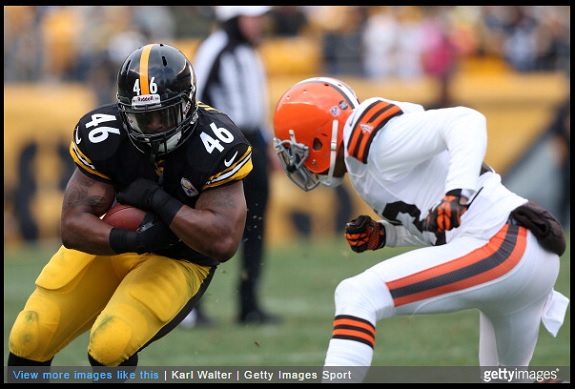The Pittsburgh Steelers spent much of the time between their last playoff victory and now replenishing their roster in preparation for their next chance to make a push for a championship. Last season showed signs that the team was on its way out of that transitional phase after posting a division-winning 11-5 record following back to back .500 seasons.
Still, the Steelers failed to make it out of the divisional round, and have lost their last three postseason contests, dating back to Super Bowl XLV. They followed up that 2010 run with a 12-4 wildcard campaign that saw a first-round exit, and subsequently failed to return to the playoffs the following two years.
So how close might they be to righting the ship and returning to that place that they have been more than any other franchise—that is, holding up the Lombardi Trophy? One way to attempt to measure that would be to compare how this season’s lineup projects against past teams.
For these purposes, it might be helpful to cite both the 2008 and 2010 teams, which are, respectively, the teams that have claimed their most recent Super Bowl championship and their most recent Super Bowl appearance.
As has been the case for the better part of the past decade, the Steelers, more or less, continue the tradition of not carrying a true fullback. That may have been the intention when they signed Will Johnson, but he has been anything but, and continues to transition more and more into a tight end.
In fact, Johnson spent considerably more time last season as an in-line blocker last season than he did coming out of the backfield. Since Bruce Arians took over as offensive coordinator, the ‘fullback’ position has been a sort of hybrid.
The 2008 Super Bowl team, for example, split time between Carey Davis and Sean McHugh as lead blockers out of the backfield. But Davis was more of a running back and McHugh was really a converted tight end.
While neither were particularly good as rushers or pass catchers, however, they both contributed positively as run blockers, in the limited time that they were used, as they combined to play less than a third of the team’s total offensive snaps.
By 2010, the Steelers were using David Johnson in the backfield as the lead blocker. This was a year that they chose to carry just three tight ends and fullbacks combined, electing instead to use an extra roster spot on the running back position, so Johnson received a healthy amount of playing time for his role.
It was, however, a role that he was still growing into, and the 2010 season found him turning in a very inconsistent performance. It is unfortunate that he is best known for missing a block in the Super Bowl at the end of that season, because he grew into a better player afterward.
Outside of 2010, the Steelers have generally kept four bodies for the tight end and fullback positions. With the top three spots already locked down—including Will Johnson—the fourth spot appears likely to go to Jesse James, a rookie fifth-round draft pick who is coming around early in training camp, both as a blocker and as a red zone threat. I think how many chances he gets to play in the regular season will be determined by how he shows for himself during the preseason, particularly in the short end of the field.






